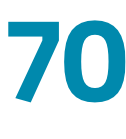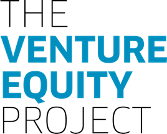
Stakeholder Mapping in Venture Equity
Transition Design Institute at Carnegie Mellon University
Understanding stakeholder perspectives on the problem of lack of funding for entrepreneurs of color in the US and UK using Transition Design.
SUMMARY
This 6-month research project brought together stakeholders for a collaborative work session to map the nature of the problem from their perspectives. The scope of this research focused first on gathering stakeholder knowledge and concerns about the problem. And second, it identifies areas of agreement and disagreement between stakeholder groups. Both of these dimensions can inform more powerful solutions to the problem.
The four stakeholder groups that participated in this work are Black Entrepreneurs, Capital Allocators, Community Organizers, and Researchers.

Stakeholder Groups

Participants from the US and UK

Working Hours
PROJECT HIGHLIGHTS
The system maps are visual representations of different aspects of capital distribution in the current situation.
The Transition Design workshops gathered an enormous amount of information and insight that represents participating stakeholder’s collective understanding of the problem of ‘Lack of Funding for Minority Entrepreneurs’, and their ideas about what steps could be taken to address this problem in the present, or near future. The Transition Design Institute (TDI) aggregated all stakeholder responses into a series of maps that together form a systemic overview of this complex problem.
These maps faithfully preserve each participant’s voice and perspective (and retain spelling errors and turns of phrase). In this spirit, the Nasdaq Entrepreneurial Center and TDI agreed that this information should be presented in a way that preserved the systems maps. Users are guided through these maps by a series of short videos that enable them to access the research outcomes at their own pace and arrive at their own insights without these being filtered as they would have been by a more traditional, written report.
These systems maps can be reviewed via the seven short videos below, narrated by Terry Irwin, Professor of Design and Director at the Transition Design Institute at Carnegie Mellon University. We also invite you to tour the system maps for comprehensive findings.
RESEARCH VIDEO #1
Introduction to the Research
This video introduces the technology and methodologies used in research gathering and analysis, and describes the four stakeholder groups who participated in a series of online workshops.
RESEARCH VIDEO #5

In this video stakeholders imagine how their lives might be different if the problem of A Lack of Funding for Entrepreneurs of Color had been resolved. This co-envisioning exercise produces a map that identifies areas in which they agree, and capture their ideas about solutions and tangible actions for the present.
RESEARCH VIDEO #6

In this video stakeholder groups told us what they thought was and wasn’t working in the present and what they wanted to take with them on a decades-long transition toward their desired future. This map shows where stakeholders agree and disagree but also contains within it a wealth of solution ideas.
Transition Design and The Transition Design Institute
Transition Design is a transdisciplinary approach aimed at addressing the many “wicked” problems confronting 21st century societies: climate change, forced migration, political and social polarization, global pandemics, lack of access to affordable housing, healthcare and education, to name a few.
These problems are interconnected, interdependent and always manifest in place and culture-specific ways. Transition Design argues that new knowledge and skill sets are required to address these problems, and that their resolution is a strategy for igniting positive, systems-level change and societal transitions toward more sustainable, equitable and desirable long-term futures. Carnegie Mellon University’s unique Transition Design program develops future design leaders with the capacity to envision and catalyze intentional change across a range of complex systems. The Transition Design Institute engages with a global community to carry forward this work under the leadership of Professor Terry Irwin and Dr. Gideon Kossoff.





Invite a Friend
Close